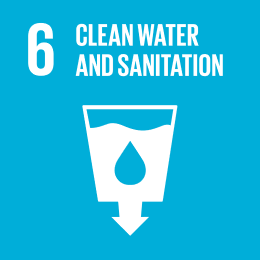Consumer Empowerment and Market
|
Consumer empowerment and market conduct (CEMC) refers to policies and practices designed to promote stable and inclusive financial services via two interconnected pillars:
• Empowering consumers to make more informed financial decisions via the provision of information, education and effective avenues for redress
• Protecting consumers via effective regulation, supervision and enforcement of market conduct by financial services providers (FSPs).
Consumer empowerment is a broad concept, which places responsibility on regulators and financial services providers to make use of easier, safer financial services and of greater benefit to consumers. Market conduct policies are used by regulators to shape, enhance and balance these three factors (i.e., the institutional framework, as well as supply-side and demand-side factors) to create a more sustainable, fair and sound financial ecosystem for consumers.
While consumer protection has often been a priority for regulators, alongside financial stability, the developments in financial services have highlighted the need for ‘strengthened, dedicated proportionate policy action to enhance financial consumer protection’. At the launch of the AFI CEMC Working Group (CEMCWG), in April 2011, it was acknowledged that expansion and innovation in products, services and technology have, undoubtedly, delivered many economic benefits –globally expanding the reach of financial services and bringing more consumers, including some who have historically struggled to access the market, into financial services. Nevertheless, the CEMCWG also recognized that the causes and effects of the 2007 global financial crisis clearly demonstrated the risk that innovation can disregard legitimate consumer needs and expectations of fair and responsible treatment by financial services firms. As a result, some consumers remain excluded from the market altogether, while others have access only to poor quality financial products or FSPs that do not treat them fairly. Renewed emphasis on consumer empowerment is often referred to as an attempt to re-balance the focus of financial services regulation towards ‘demand-side’ factors – i.e. consumer needs, behaviours and outcomes. This is viewed as both essential and timely.
CEMC regulation is viewed by policymakers and regulators – across the world and in relation to a range of different markets – as offering potential to improve outcomes for individuals, in general, and, in particular, those who are vulnerable, but also as a route to supporting economic growth by promoting and stimulating healthy competition while, at the same time, reducing the cost and burden of regulation.

CEMC policies deliver two important linked outcomes in relation to financial inclusion. First, they increase the potential for FSPs to extend access and choice to groups that are currently underserved or unserved via, for example, new products and services, alternative delivery channels or innovative technologies. Second, they have the potential to improve the quality of products available in the market to ensure that financial inclusion delivers meaningful benefit to consumers. Without this approach, consumers engaging with financial services for the first time are at significant risk of falling prey to poor quality or unsuitable products, resulting in erosion of income due to unexpected costs and charges, punitive terms and conditions, over-indebtedness, loss of savings, damage to their credit history, and repossession of goods and assets.
Fundamental and emerging topics under CEMC are explored in-depth through AFI’s Consumer Empowerment and Market Conduct Working Group (CEMCWG).
CEMC also has relevance for gender policies. Only five percent of AFI members surveyed perceived that they had gender-sensitive consumer protection mechanisms in place. As such, identifying the differential consumer protection needs for women and men can be important for regulators to meet their consumer protection role.
Consumer protection and empowerment are key to financial inclusion efforts and its aim of ensuring that everyone is included in their country’s financial sector. This is clearly demonstrated in the number of Maya Declaration targets that are categorized under CEMC – including targets on consumer protection, financial literacy and financial education.
| PRIMARY THEMATIC AREA | 2012 | 2013 | 2014 | 2015 | 2016 | 2017 |
2018 | 2019 | 2020 | |
|---|---|---|---|---|---|---|---|---|---|---|
 Consumer Empowerment and Market Conduct
|
Maya Declaration Targets | 49 | 72 | 99 | 102 | 122 | 134 | 142 | 192 | 192 |
| Completed | 31 | 37 | 50 | 51 | 55 | 58 | 58 | 70 | 84 | |
| In Progress | 20 | 17 | 14 | 12 | 16 | 9 | 84 | 122 | 106 | |
| Completion Rate | 63% | 51% | 51% | 50% | 45% | 43% | 40.8% | 36% | 44% | |
AFI’s Consumer Empowerment and Market Conduct Working Group (CEMCWG)
A platform to discuss policy and regulatory issues related to consumer empowerment initiatives and market conduct regulations.
Launched in April 2011, CEMCWG aims to support consumer empowerment and protection in order to help secure access to and improve the quality of financial services. Its prime objective is to develop and share a common understanding of lessons learned and cost-effective policy tools, and to promote their adoption at the national level as well as in a broader international context.

LEAD
Walter Umaña Solano, Superintendencia General de Entidades Financieras de Costa Rica (SUGEF)

CO-LEAD
Rachael Spiwe Mushosho, Reserve Bank of Zimbabwe
| 2011 | 2012 | 2013 | 2014 | 2015 | 2016 | 2017 | 2018 | 2019 | 2020 | 2021 | |
|---|---|---|---|---|---|---|---|---|---|---|---|
| Events | 1st: Kuala Lumpur, Malaysia 2nd: Riviera Maya, Mexico |
3th: Bangkok, Thailand 4th: Cape Town, South Africa |
5th: Lima, Peru 6th: Kuala Lumpur, Malaysia |
7th: Minsk, Belarus 8th: Port of Spain, Trinidad and Tobago |
9th: Kuala Lumpur, Malaysia 10th: Maputo, Mozambique |
11th: Yerevan, Armenia 12th: Nadi, Fiji |
13th: Mahe, Seychelles 14th: Sharm El Sheiikh, Egypt |
15th: Merida, Mexico 16th: Sochi, Russia |
17th: Nassau, The Bahamas 18th: Kigali, Rwanda |
19th: Virtual Meeting 20th: Virtual Meeting |
21th: Virtual Meeting 22th: Virtual Meeting |
| Member Institutions | N/A | 30 | 41 | 49 | 52 | 59 | 57 | 60 | 62 | 62 | 61 |
| Knowledge Products (aggregate) |
2 | 2 | 6 | 6 | 8 | 9 | 11 | 12 | 12 | 15 | 21 |
| Policy Changes (aggregate) |
5 +20 |
16 +20 |
20 +20 |
26 +20 |
34 +20 |
42 +20 |
62 +20 |
82 | 130 | 157 | TBD |
| Peer Reviews (aggregate) |
0 | 0 | 0 | 7 | 7 | 8 | 9 | 11 | 13 | 15 | TBD |
The CEMC Working Group achieves these objectives by:
Digital Financial Literacy Subgroup (jointly with DFSWG)
The digitalization of financial landscape and the need to strengthen digital financial literacy are at the heart of regulators agenda. Digital financial literacy (DFL) appeal to different segments of the population, and a main question would be to know how to achieve an inclusive use of digital tools. Financial literacy is still not priority for most adults and there are cost implications for financial literacy and capability campaigns. Other challenges faced in the implementation of digital tools for financial capability include behavioral bias and lack of trust. Jointly with the DFSWG, CEMCWG aims to develop an appropriate and effective guideline to aid regulator in the oversight of safe, accessible digital tools that promote financial capability and builds consumer trust in digital platforms.
Financial Education Subgroup
Increased access and usage of financial services and products is a catalyst for economic empowerment and development for marginalized and vulnerable target groups such as women, the youth and forcibly displaced persons. Financial education means a process of providing people with knowledge, understanding, skills and confidence to make financial decisions and take actions which are appropriate to their circumstances and needs. On the other hand, financial literacy is the outcome of financial education programs which means the knowledge, understanding, skills and confidence that people have to assist them in making sound financial decisions and actions. Financial literacy programs can help to promote financial education programs that are scalable and sustainable and can also help to pave the way for their financial inclusion in the medium to long term.
Institution Framework Subgroup
Until recently, the main objective of a Risk-Based Supervision (RBS) approach was ensuring the safety and soundness of the financial system. Originally used for prudential supervision of banks and insurance companies, RBS has been modified for use in pensions and is now being considered for market conduct supervision. The challenges of supervising consumer protection are the same: deploying sufficient resources, focusing on both present and future risks, preventing risks from escalating and taking early corrective actions. There is still a need to assess the effectiveness of CEMC supervision by regulators especially as it relates to planning and implementation of onsite examinations. To address main challenges related to complaint handling in Central Banks, including (but not limited to) human resource management, feedback mechanism, enabling regulations required for effective complaint handling and effective enforcement mechanisms.
Transparency and Disclosure Subgroup
A reliable and robust help and redress mechanism is a core component of an effective consumer protection framework. Developing one primarily involves establishing internal and external complaint–handling procedures that ensure disputes between consumers and FSPs are dealt with fairly and expeditiously. A complaint–handling mechanism should therefore be independent, transparent, free of charges, easily accessible and effective. Published:
2021
2020
2018
2017
2016
2015
2013
2010

When financial service providers offer measures to consumers to cushion the effects of COVID-19, particularly through access to emergency funds, increasing limits for their credit cards or easy access to additional loans, it stringent oversight and enforcement are required to ensure that consumers are not overindebted. Consumer Empowerment and Market Conduct Working Group webinar on Consumer Protection Amidst A Pandemic: Case of COVID-19 discussed policy and regulatory interventions, opportunities for cooperation and partnership, and the role of consumer protection amidst a pandemic.
Policymakers and regulators face the challenge of increasing the level of engagement with financial services while at the same time ensuring consumer protection. Webinar session looked into how to design consumer protection strategies that take into account the behaviors of consumers.

© Alliance for Financial Inclusion 2009-2024